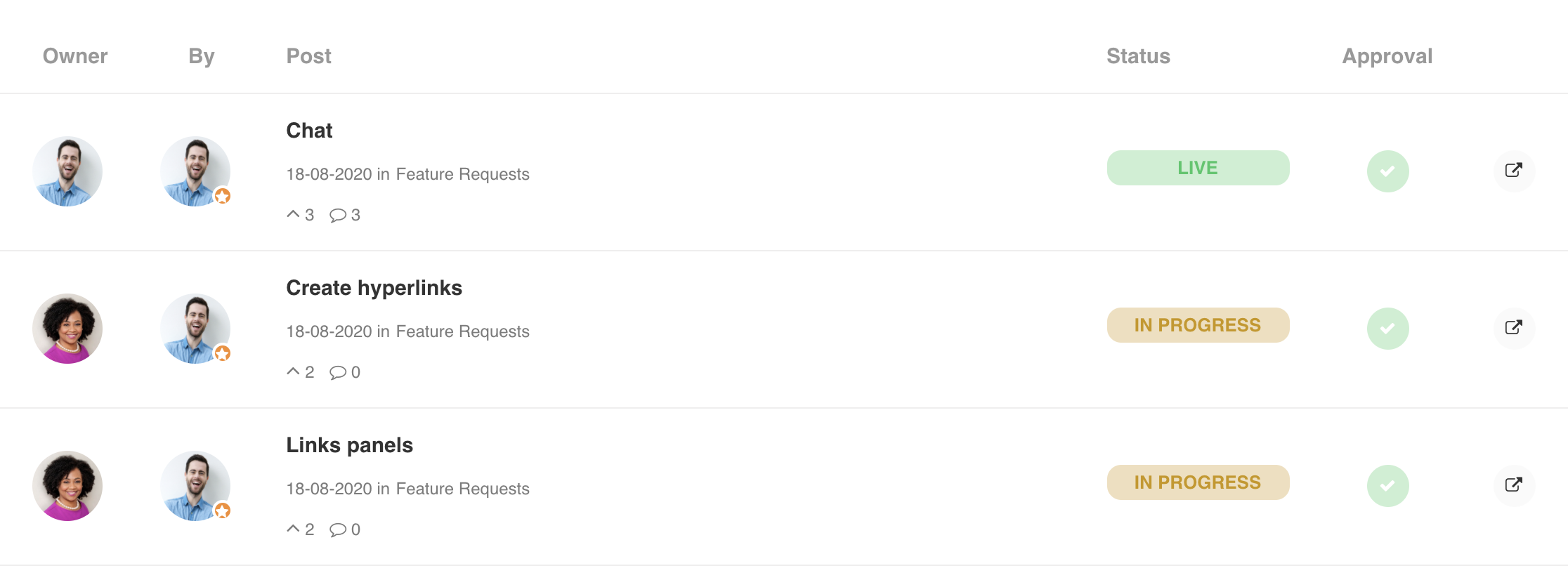How to Work on SaaS With a Distributed Team
Working from home, focusing on deliverables instead of office hours, and engaging with professionals all around the world seems to be the future of the workforce. Apart from COVID-19’s sad outcomes and high levels of uncertainty, we are also seeing a monumental shift in how people work, as we’ve all been forced to find new ways to collaborate, communicate, and do our jobs effectively.Companies such as Facebook, Twitter, and Drift announced they’ll be allowing their employees to work from home until the end of this year and maybe further. Employers are allowed to finally find a work-life balance by eliminating their employees’ commuting time and offering them the possibility to spend more time with their families.It’s hard to believe that just a few months ago, it was the exception to the norm to have a distributed team. But when the world came to a halt because of a virus, we moved toward a less centralized and controlled way of working, and SaaS companies can benefit greatly from it.The awesome thing about running a SaaS business is that you don’t need to have everyone in the same office. You can build an international team and forget all about borders, time zones, and language barriers. And some companies have proved that it’s more than possible to build a highly successful business having a group of coworkers who work remotely either nearby or far away.
SaaS companies with distributed teams
If you’re still wondering if this “work from home” or “distributed team” thing will give you the wanted results, take a look at this list of SaaS brands that grew without having their employees in one office, country, or even continent:
- Basecamp. Founded in 1999, Basecamp started out with three people, and today, the company has around 50 employees across 32 different cities around the world. Jason Fried, the founder of Basecamp, resealed a book in 2013, called Remote: Office Not Required. Fried has managed to grow his company to a $100 billion valuation with a distributed team.
- Zapier. Zapier boasts, “We’re a 100% distributed team living and working all over the world to help you automate the most tedious parts of your day to day job.” This incredibly successful company hit 3 million subscribers in just 18 months.
- ConvertKit. According to ConvertKit’s website, “The team behind ConvertKit is spread around the globe, but come together for one purpose: to make email easier and more robust for professional creators like you.” With 58 team members across 48 cities, ConvertKit went from $0 to $968,000 in monthly revenue.
- Hubstaff. Hubstaff is powered by a 100% remote team. Launched in 2012, the company has over 60 remote team members representing 18 countries. Not bad for a company that now brings in a $130,000 monthly revenue.
Even at Upvoty, we follow the same narrative and believe that having all of your team in one office is not a prerequisite for success. We’re collaborating with professionals all around Europe, focusing on bringing people under the same mission. So having a distributed team is more than viable if you want to grow a successful business.
The challenges of a distributed or international team
This reality, however, comes with a series of challenges one should consider. Here are some of them:
Here are some of them:
- Slow communication. The good thing about being in an office is being able to communicate with your employees or colleagues right then and there. This becomes more difficult when you have an international team spread across the globe. Answers to Slack questions or emails may be delayed by time zones or different country holidays your employees may have depending on their location. This aspect will always make communicating and getting work done more difficult.
- Lack of knowledge transfer. Each person may have a certain way of doing things, or each team may have valuable information they fail to communicate. This may lead to slower progress and a lack of coordination between your distributed teams.
- Misunderstandings. Distributed teams usually communicate via email or Slack, yet the drawback of using these is sometimes messages are interpreted incorrectly, or people may misread the tone of a message completely. This may create some tension among your team members or lead to tasks not being completed correctly.
- Challenges in building a company culture. It’s much easier to build your company culture when you have everyone in the same office. It’s more difficult to align your remote team with your company’s mission and values.
- Delayed reaction to issues. What do you do when your website is down, but your development team is across the globe, sleeping? This may happen when your teams are separated by continents and you can’t get certain professionals to react immediately to issues that may appear.
How to ensure an efficient workflow for your distributed team
The good news is that you can overcome these challenges with a few best practices to help your distributed team work to their highest potential.
Tip 1. Prepare an onboarding kit for your remote employees
Highlighting your brand’s mission and values isn’t enough if you want to build a strong company culture—you also need a powerful hiring system in place so that any new employees who join your team will complement, rather than disrupt, the work of your existing team.Create an onboarding kit that will walk your new employee through the remote working processes you’ve put in place, along with the things your company stands for. This kit will help you align everyone with your goals, let people know what’s expected from them, and guide them through the company’s policies, personality, and standards.
Tip 2. Set up clear business OKRs
Are you used to KPIs? Think about focusing on OKRs. If you’re not familiar with OKRs, this definition from Perdoo sums it up nicely: “The acronym OKR stands for Objectives and Key Results, a popular goal management framework that helps companies implement their strategy. The benefits of the framework include improved focus, increased transparency, and better alignment. OKR achieves this by organizing employees and the work they do around achieving common objectives.”An OKR will usually consist of an objective that defines a goal and three key results that measure progress toward the objective. The same article explains that this framework “helps companies to move from an output to an outcome-based approach to work.” By setting up the quarter and annual business OKRs, you’ll make sure that everyone is clear about what needs to be achieved and how progress will be evaluated.
Tip 3. Make sure everyone knows his or her scope of work
Apart from setting up your business OKRs, get people to come up with their team and individual OKRs, which should match up with your overall company OKRs. This is especially crucial when you have a distributed team that can’t get together too often because it ensures that everyone is focused on achieving the same goal and making progress toward the same objectives. Utilizing tools like Ledgy’s employee dashboard, built to make equity easy to understand, can further enhance transparency and alignment, ensuring that everyone is on the same page regarding their roles and contributions to the company’s success.
Tip 4. Make sure everyone is informed about each team’s projects and progress
Encourage people to document absolutely everything. Get your development team to share the latest product updates and upcoming product changes. Have your sales team share their new deals, along with the insights they get by talking to leads and prospects. Ask your marketing team to make the content calendar available, as well as the process that goes along with keyword and user intent research. In addition, run several bootcamps monthly, mix your teams into different online groups, and ask them to solve a specific business-related challenge and document the results. To ensure an efficient workflow for your distributed team, knowledge transfer is crucial. So have everything documented, making sure that everyone from your team can update or access the information.
In addition, run several bootcamps monthly, mix your teams into different online groups, and ask them to solve a specific business-related challenge and document the results. To ensure an efficient workflow for your distributed team, knowledge transfer is crucial. So have everything documented, making sure that everyone from your team can update or access the information.
Tip 5. Use the right online tools
If you want your teams to know what’s going on at all times, then you need to use the right software or digital tools. For example, a key element to ensure the success of your SaaS company is gathering the feedback of your users, analyzing it, prioritizing it, and adding it to your product roadmap. Using Upvoty, you can easily gather user feedback and access it remotely so that you can match your SaaS product to your customers’ needs and requirements.
Tip 6. Establish both weekly and monthly to-do lists for your teams
You should know exactly what your teams are working on at all times. To do that, have online meetings with your team leaders and discuss the next steps for each team’s projects. For greater accountability, ask the managers to send you a quick weekly email that details everything their teams accomplished. If you don’t have a big team, you can ask all of your employees to send you a quick message with their weekly progress and results. This will keep everyone accountable and focused on what needs to be done.
Tip 7. Run an online monthly all-hands meeting
 Online meetings can be quite tiring and time-consuming, especially when you have a big team. But they’re imperative if you want to be sure that everyone on your team is communicating often and adequately. Schedule a monthly or a quarterly all-hands meeting where you can present your company’s progress and results, along with the short-term action plan. You can also open the floor for any questions people may have. These meetings will help establish effective communication with your teams, as well as make you available for potential questions or challenges you’ve missed.
Online meetings can be quite tiring and time-consuming, especially when you have a big team. But they’re imperative if you want to be sure that everyone on your team is communicating often and adequately. Schedule a monthly or a quarterly all-hands meeting where you can present your company’s progress and results, along with the short-term action plan. You can also open the floor for any questions people may have. These meetings will help establish effective communication with your teams, as well as make you available for potential questions or challenges you’ve missed.
Tip 8. Focus on deliverables instead of hours
Finally, we’re used to valuing the number of hours someone puts into his or her work instead of the deliverables. However, it’s important to consider that we all have a different work pace. Someone may work six hours per day and accomplish a great deal of work, while someone may work only three hours per day while producing the same deliverables. So instead of obsessing over tracking your employees’ times, it’s much more efficient to work based on deliverables and projects.Obviously, this may be impossible for the customer success team, but in most cases, you can provide your teams with a list of tasks or projects, along with the deadlines, and let everyone organize their time and work how they know best. This way, you’ll build an autonomous and responsible distributed team that will help you grow your business and transform your vision into a reality.

